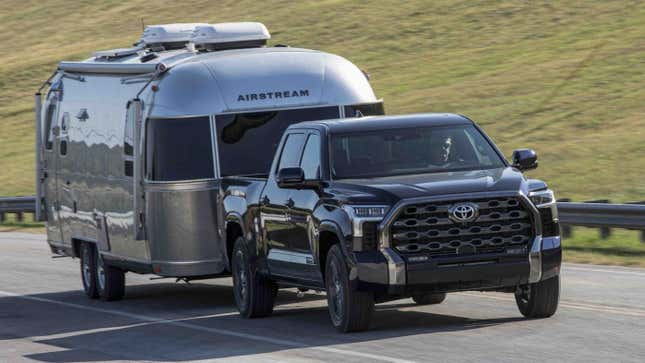
Back in May it became obvious that Toyota had to do something about the frequent failures of its twin-turbo 3.4-liter V6 engines, which are found in the Tundra pickup and Lexus LX 600 SUV. The company looked into what could be done to ameliorate the issue, but it looks like the only way to make things right with customers is to yank out their engines and replace them with brand new units. This recall affects 102,092 vehicles, including 98,568 Tundras and 3,524 LX 600s. Toyota says it will replace the engine in “all involved vehicles” at no charge.
Toyota, the company long known for its steadfast reliability, really stepped in it with this one. The Japanese automaker says the issue was caused by a manufacturing process where the oil passages weren’t properly cleaned out after machining. That resulted in metal shaving debris floating around in the engine’s lubrication system, clogging up the works. Whether the debris causes issues in the oil pickup tube or in the main bearings, it’s going to eventually cause an issue. And the result is a blow’d up motor.
This recall covers all Tundras built between November 2, 2021 and February 13, 2023, as well as Lexus LX 600 models built between July 30, 2021 to November 25, 2022. Toyota says it is not aware of any injuries related to the problem, which is good, but it has sidelined a shitload of trucks. Recall documents indicate at least 824 engine warranty claims connected to this problem.
The report claims that Toyota was first made aware of the potential issue when a vehicle equipped with the faulty V35A engine stalled as far back as March of 2022. “Toyota recovered the involved parts and performed an investigation of the engine failure. Through this investigation, it was found that the crankshaft main bearings had seized.”
In July of that same year two further engines were found with damaged bearings. At that point Toyota hypothesized it was an engine contamination issue and ordered the cleaning process of its engines be updated. It is interesting that Toyota will prophylactically replace engines built even after the cleanliness process was updated. I guess it’s better to be safe than sorry. And Toyota is already quite sorry.







